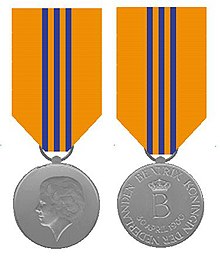


Inauguration (inhuldiging) is the enthronement ceremony of the Dutch monarch.



Inauguration (inhuldiging) is the enthronement ceremony of the Dutch monarch.
In contrast with many other European monarchic customs, in the Netherlands new monarchs are not crowned. The Dutch crown and other regalia have never been physically bestowed. The Netherlands historically and traditionally consists of mainly Catholics in the south and Protestants in the north. The Dutch Monarchy belongs to the reformed faith, but with both the absence of a national church and any form of hierarchy within the Dutch Reformed Church, there is no senior or principal religious figure to bestow the crown. This is opposite of, for example, British customs, in which the monarch is crowned by the senior bishop of the Church of England. As the Dutch king is a 'King of the Netherlands' rather than a 'King of the Dutch', the king also cannot be crowned 'in the name of the people', as is the case with for example the King of the Romanians or the Emperor of the French.
By law, inauguration is strictly ceremonial as the successor to the throne instantly becomes the new monarch at the moment the former monarch dies or abdicates. The last Dutch monarch to rule until his death was William III. His successor was his daughter, Wilhelmina; however, she did not ascend the throne until her coming of age. Her mother Emma of Waldeck and Pyrmont was queen regent 1890–1898 during that time. Wilhelmina passed the throne to her daughter Juliana in 1948.
The monarch, the heir to the throne, the royal family and the cabinet led by the prime minister meet in the Royal Palace of Amsterdam in the State Hall. The monarch signs the instrument of abdication, which is then signed by the heir, members of the royal family and members of government. As soon as the instrument is signed, the new inauguration is complete. The previous monarch then steps on the balcony of the palace, where the new monarch is introduced to the waiting public outside.
After the signature, the new monarch proceeds from the palace to the Nieuwe Kerk, where the States-General of the Netherlands and the cabinet along with guests of honour have assembled.
Inside the church, symbols of the dignity and authority of the monarch, the crown, orb, sword of state and scepter, are placed on cushions. The crown symbolises sovereignty and dignity, the scepter authority and the orb the territory of the Kingdom. The other two regalia – the sword of state (symbolising power) and the standard of the kingdom bearing the coat of arms of the Netherlands – are carried by two senior military officers. Surrounding the royal regalia is a copy of the Dutch Constitution.
The chamberlain announces the arrival of the new monarch, who takes the seat on the throne opposite the regalia. The monarch reads a speech from the throne and solemnly swears to uphold the constitution and protect the people of the Kingdom.
The head of the cabinet calls out each member of the States-General, who swears allegiance to their monarch. They either swear with the right hand raised "So truly help me God almighty," or take a pledge with a simple "I vow that".[1]
After the homage ceremony, the monarch then exits the church and returns to the palace. The ceremony is then followed by an official reception at the palace.
Traditionally the Dutch government issues for each inauguration a limited number of commemoration medals (Inhuldigingsmedaille). The obverse shows the profile of the new monarch, while the reverse features the royal monogram, surrounded on the rim with the name of the monarch and the date of the inauguration. The ribbon's colour is mainly in orange, the colour of the royal house, and blue.